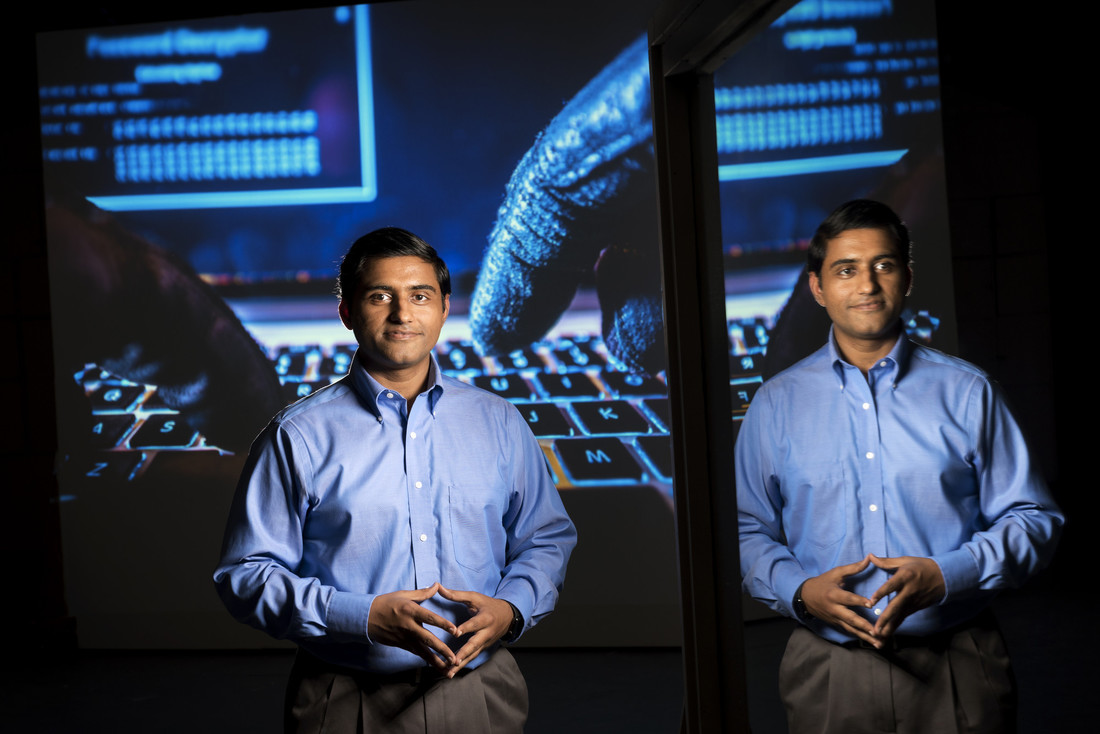Grant helps fund research to track perpetrators of violent cyber flash mobs
A University of Arkansas at Little Rock professor has received a $150,000 grant to continue his investigation of deviant cyber flash mobs that lead to violent or damaging behavior.
Dr. Nitin Agarwal, UA Little Rock Jerry L. Maulden-Entergy endowed chair and professor of information science, received the one-year grant from the U.S. Army Research Office as a continuation of the nearly $300,000, three-year grant he received in 2016.
The grant, “Towards Predictive Modeling Deviant Cyber Flash Mobs: A Socio-Informatics Driven Hypergraph Framework,” analyzed the formation of cyber flash mobs, investigating how and why the gatherings occur and why they’re so effective. The award is funded by the Army Research Office under the Social and Cognitive Networks program within the Network Sciences division.
“We were awarded the grant to develop predictive models for cyber flash mobs with implications to deviant behaviors on the internet, such as coordinated spreading of misinformation and fake news, violent extremism such as mob lynchings observed in Asia, and radicalization and recruitment campaigns by terrorist and extremist groups and other transnational crime organizations.”
A phenomenon rooted in Internet communities such as Facebook, Twitter, and blogs, cyber flash mobs are defined by Agarwal as “self-organized groups of individuals who get together at a public place or even Internet (cyber) spaces, perform an unpredicted act, and quickly disperse into anonymity.” Though the activities of these groups can range from dance performances to peaceful protests, numerous groups promote violent, extremist, or otherwise negatively disruptive behavior.
“These trends are becoming more dangerous and widespread,” Agarwal said. “We are living in a more connected world where everything is controlled by cloud-based services. It is more convenient, but it leaves us more susceptible to cyber attacks where public infrastructure can be brought down more easily.”
The central goal of the research is to develop an accurate, practical model for predicting how and if an extremist group will launch a cyber flash mob. To accomplish this, Agarwal and his graduate students gathered data on past violent cyber flash mobs and analyzed the information, pinpointing the common elements in the groups’ strategies.
“During the first three years, that grant looked into deviant behaviors of groups on cyber platforms, like WhatsApp. We tried to model the activities of the deviant groups. Social processes like protests, online movements, cyber heists, and thefts are often coordinated,” Agarwal explained. “A single person cannot mobilize such a large social process. Our research is looking into identifying such groups who are committing these acts and creating a theoretical model to explain these behaviors.”
As mainstream social media websites like Facebook monitor and regulate their users’ activity more frequently, online groups and users often move their activities to lesser-known platforms that are harder to track.
“These people are moving into multiple social media platforms, most preferably in places where suspension of their accounts is not an issue, like Gab,” Agarwal said. “They are wary of concentrating too many resources on social platforms that may suspend them. In the last 10 years, we have seen the rise of Facebook, Twitter, and YouTube. In the next 10 years, we are seeing the growth of more niche platforms. As social media becomes more fragmented, it becomes harder and harder to track groups and behaviors.”
Agarwal and his team are analyzing the behavior of potentially dangerous cyber flash mobs coordinators through their behaviors, such as an increase in coordinated activity that might signal that a cyber attack is imminent.
“We are chasing the behaviors, not the platform,” Agarwal said. “Given the cyberactivity of these groups, we may be able to predict before they launch an attack. You often see a spike in activity when they have started coordinating an attack. You might be able to tell that there is some suspicious coordinated activity and where it is focused. If there is enough lead time in these spikes, you might be able to predict a cyber attack and then have enough time to launch measures to counter the attacks.”
The research project also utilizes social cyber forensic methods to track individuals and groups who use multiple platforms and online identities to coordinate cyber attacks.
“People can adopt different usernames on different platforms, so how can you tell who is doing the same attacks? We use social cyber forensics to look deeply at these individuals and tell what IP addresses they are using, what type of tracker codes they use, and what websites they frequent,” Agarwal said. “We can start utilizing a digital trail of an individual on different platforms. That allows us to connect the digital trail of a user using cyber forensic technology more accurately than other technologies that are out there. We are bringing multiple research areas together that can complement each other and serve the same goal.”
Agarwal heads the Collaboratorium for Social Media and Online Behavioral Studies (COSMOS) at UA Little Rock, which aims to be at the forefront of the ever-evolving field of social computing. COSMOS is leading several collaborative projects with total funding of more than $10 million from various U.S. federal funding agencies to address some of the most challenging problems of knowledge extraction from big social data. The center also develops methodologies to diagnose novel pathologies of online social media.
